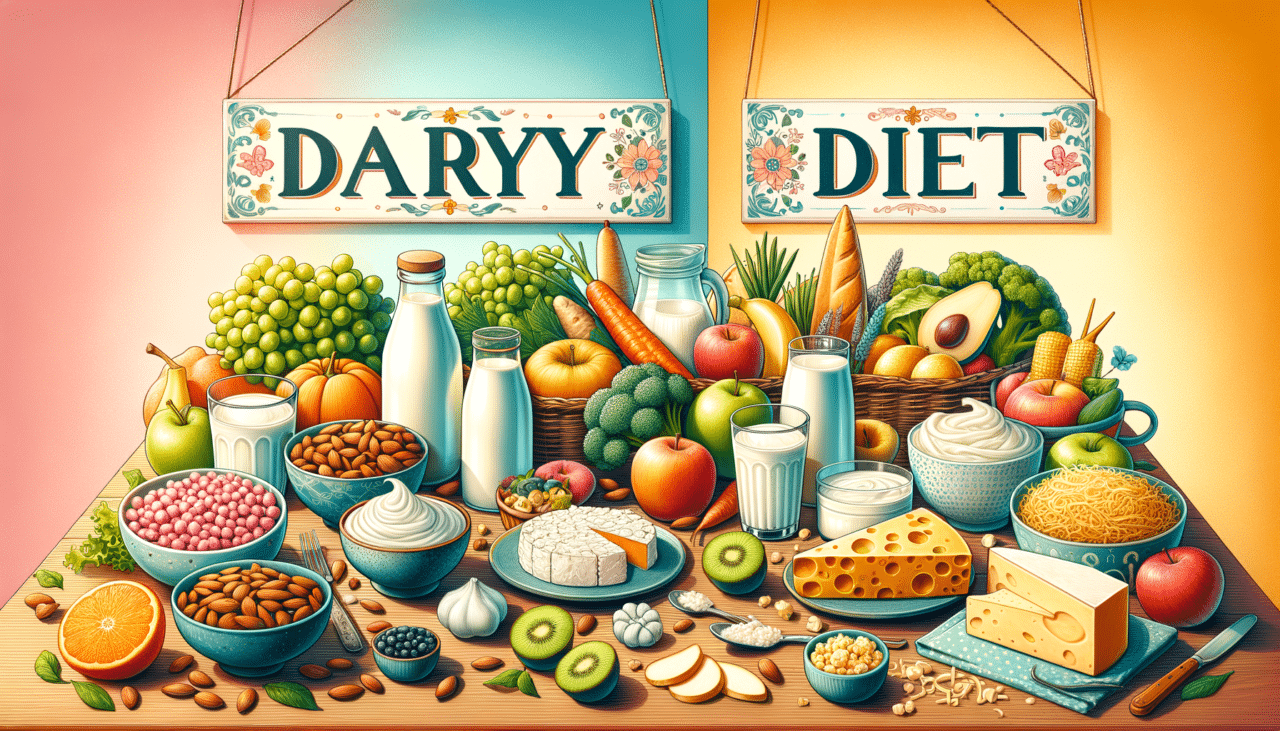Dairy-Free Diet vs. Dairy-Inclusive Diet: A Comprehensive Comparison
G’day, readers! Darrin here, your trusty Aussie guide to all things dietary. Today, we’re diving headfirst into the creamy, dreamy world of dairy—or, for some of you, the decidedly less creamy world of its absence. Whether you’re lactose intolerant, a plant-based enthusiast, or simply a fan of cheese that would make even the French envious, this article’s for you. So, without further ado, let’s milk this topic for all it’s worth!
Dairy-Free Diet: Characteristics
The dairy-free diet is exactly what it sounds like—free from all forms of dairy products. Whether you’re dodging dairy due to allergies, ethical reasons, or just because you prefer almond milk in your morning brew, this diet has its own set of unique characteristics:
-
Plant-Based Alternatives: Almond, soy, oat, and coconut milk have become the new “moo” in town. They’re not just for hippies anymore; everyone’s jumping on the plant-based bandwagon.
-
Lactose-Free Living: No lactose means no tummy trouble for those with lactose intolerance. Say goodbye to the awkward “is there a restroom nearby?” dance.
-
Nutrient Considerations: While you might miss out on calcium from traditional dairy, fear not! Many plant-based alternatives are fortified to keep your bones as strong as the Sydney Harbour Bridge.
-
Ethical and Environmental: For the eco-warriors, a dairy-free diet can reduce your carbon footprint, as plant-based farming tends to be more sustainable.
-
Allergy-Friendly: Avoids dairy allergies, which can be a lifesaver—literally—for some folks.
Dairy-Inclusive Diet: Characteristics
For those who can’t imagine life without cheese or a splash of milk in their tea, a dairy-inclusive diet offers its own palate-pleasing perks:
-
Rich in Calcium and Vitamin D: Dairy products are a powerhouse for bone health, akin to having your own personal gym for your skeleton.
-
Versatile Ingredients: From creamy sauces to velvety desserts, dairy is the culinary chameleon that blends into many dishes with ease.
-
Probiotics Galore: Yogurt and fermented dairy products are teeming with probiotics, those friendly bacteria that keep your gut happier than a koala in a eucalyptus tree.
-
Complete Proteins: Dairy provides all nine essential amino acids, making it a complete protein source—perfect for those who like to flex their muscles.
-
Culinary Tradition: Whether it’s a Christmas pavlova topped with whipped cream or a side of buttered toast, dairy is deeply woven into many cultural cuisines.
Now, let’s break down the main points in a handy comparison table:
| Feature | Dairy-Free Diet | Dairy-Inclusive Diet |
|---|---|---|
| Primary Ingredients | Plant-based milks (almond, soy, oat), dairy-free cheese and yogurt | Milk, cheese, yogurt, butter |
| Nutritional Content | Often fortified with calcium and vitamin D | Naturally high in calcium, vitamin D, and complete proteins |
| Digestive Impact | Suitable for lactose-intolerant individuals | May cause digestive issues for lactose-intolerant individuals |
| Environmental Impact | Generally lower carbon footprint | Higher carbon footprint due to livestock farming |
| Culinary Versatility | Increasingly versatile with innovations in plant-based products | Highly versatile, traditional in many culinary applications |
| Health Benefits | Can reduce allergy and intolerance symptoms, ethical considerations | Supports bone health, provides probiotics for gut health |
| Cultural Integration | Growing in popularity, but less traditional in many cuisines | Deeply integrated into many traditional cuisines, especially Western diets |
In conclusion, whether you’re a dairy devotee or a plant-based pioneer, each diet comes with its own set of benefits and challenges. It’s all about finding what works best for your body, your lifestyle, and your taste buds. After all, life’s too short for dietary dogma—so go ahead and explore the delicious diversity that both options offer!
And remember, if you ever find yourself in a quandary over choosing between dairy and dairy-free, just ask yourself: “What would a koala do?” (Hint: They’d probably choose whatever involves the least amount of effort.)
Until next time, happy eating!
Darrin

Comments (0)
There are no comments here yet, you can be the first!